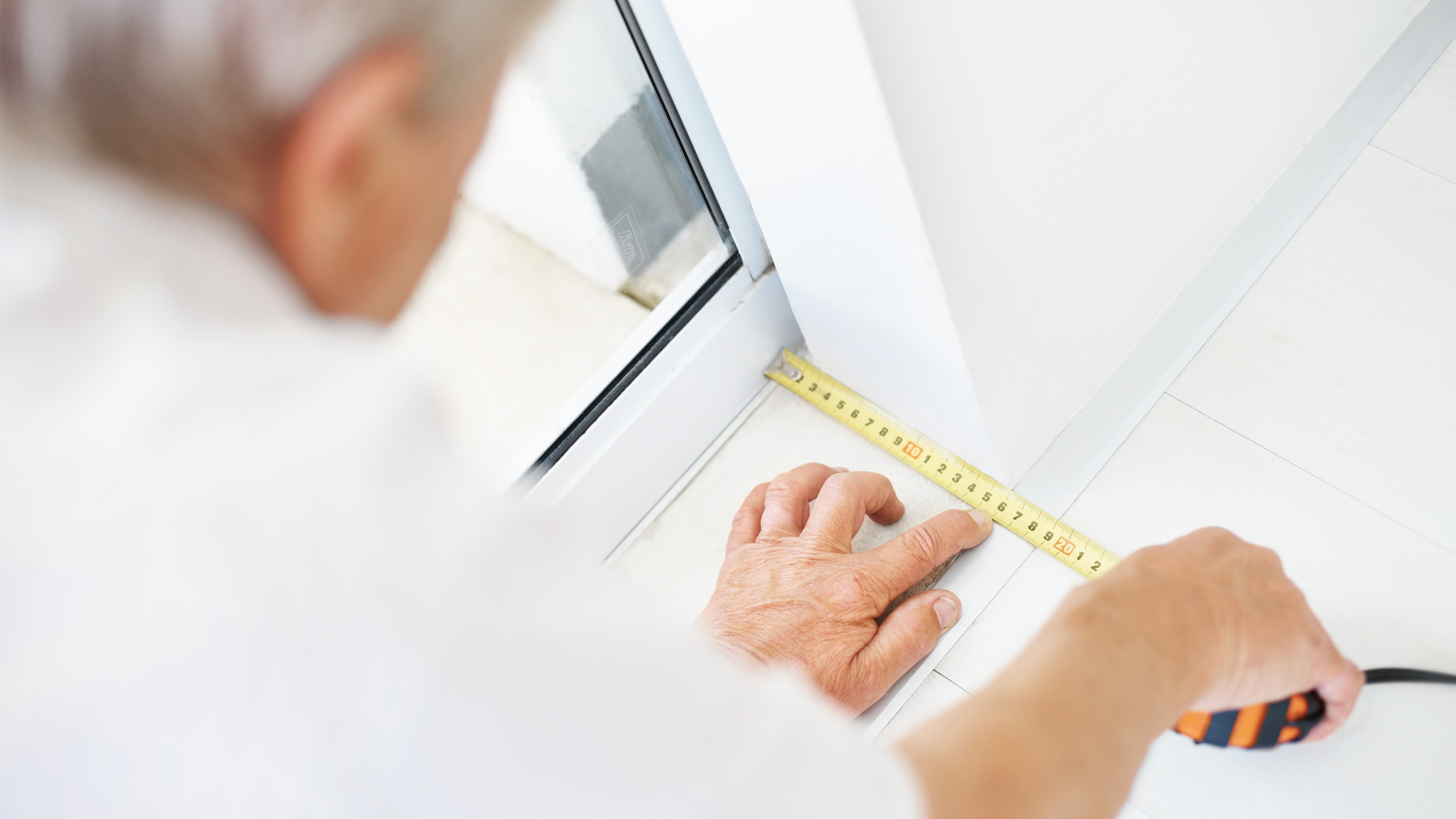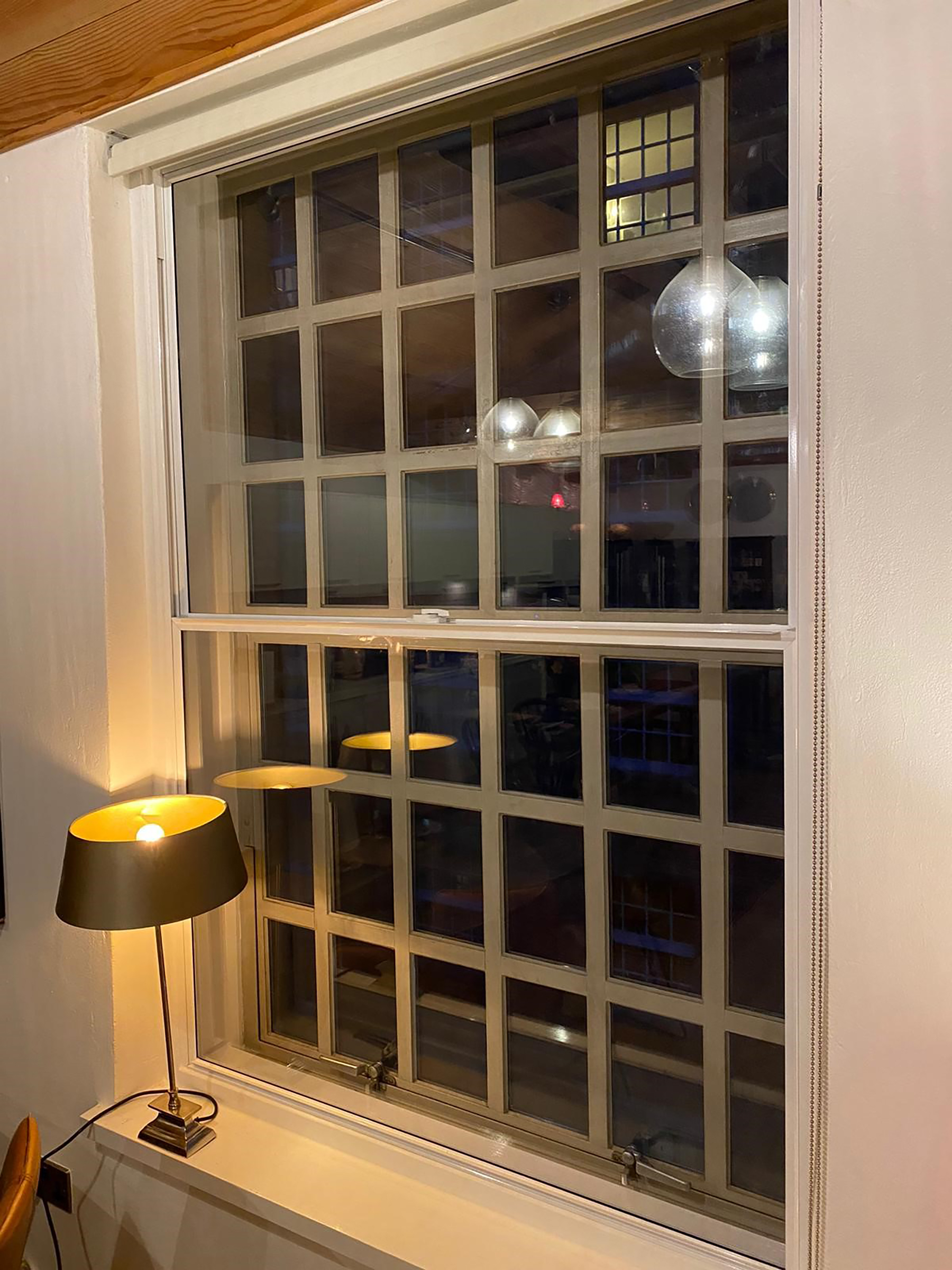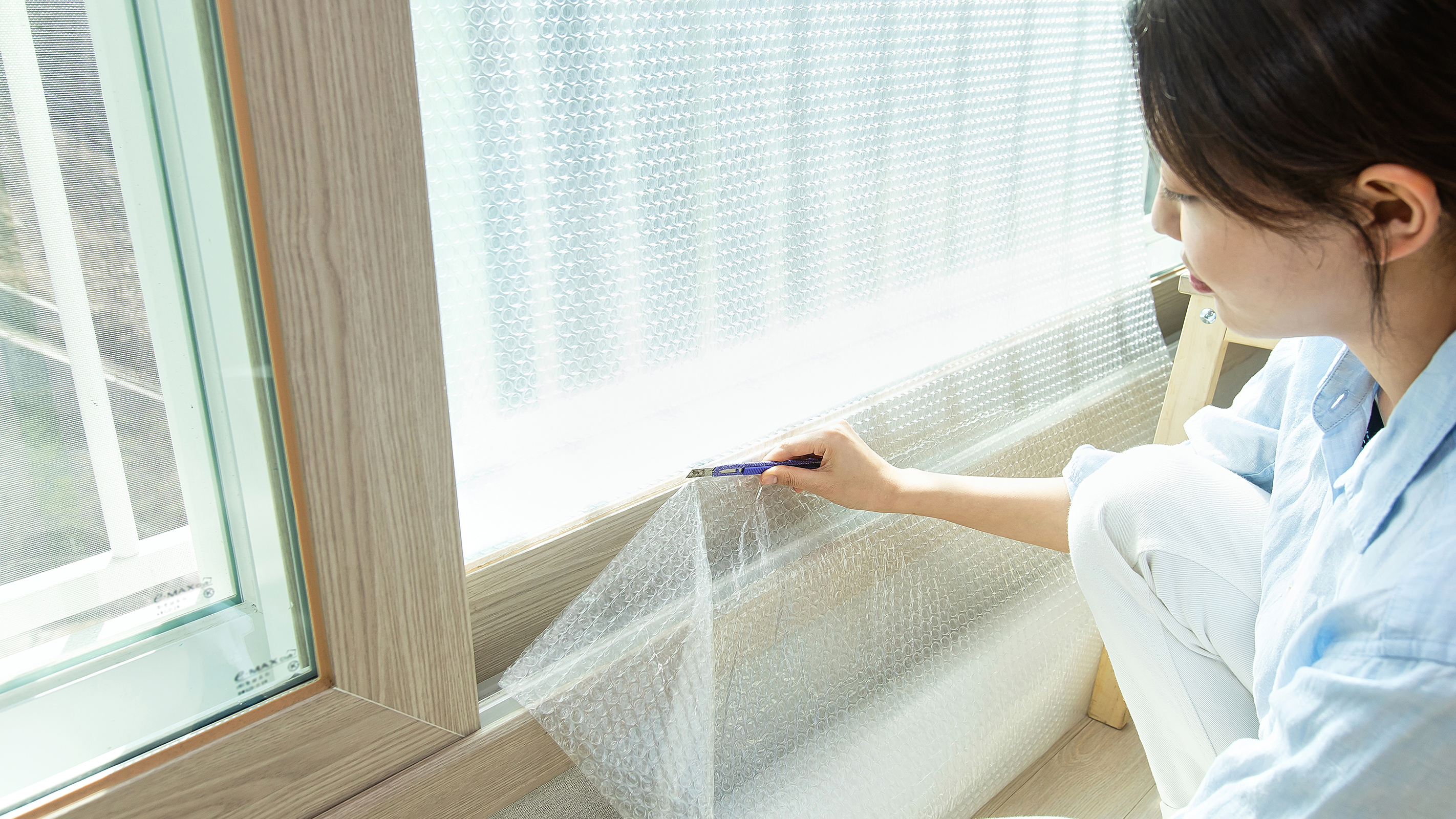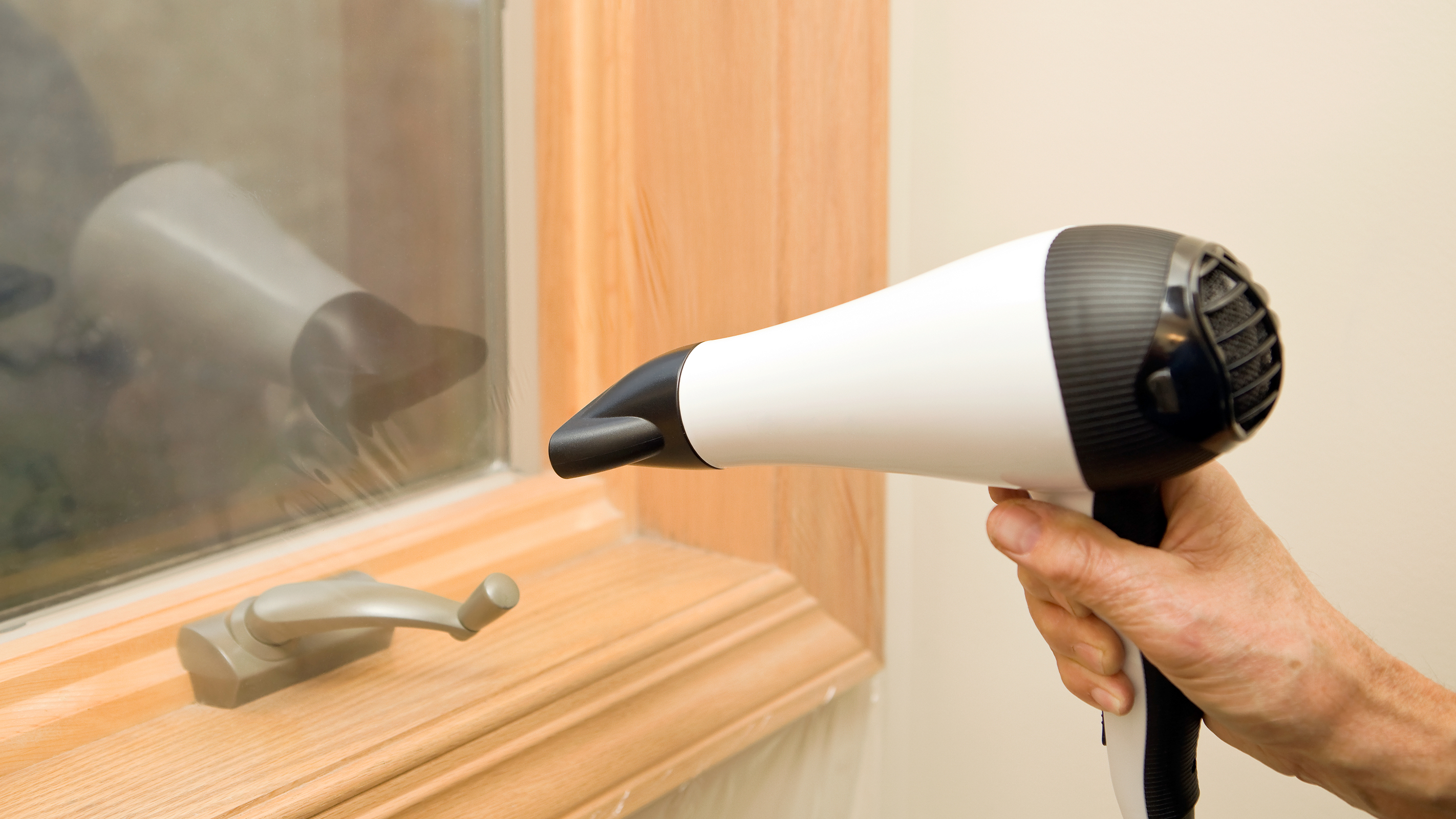DIY double glazing: 4 ways to improve your windows on a variety of budgets
Trying to save money by fitting DIY double glazing? We explain four options to improve your glazing this winter, without calling in the professionals

It might not be for the amateur renovator, but DIY double glazing is a job that is possible to complete yourself. There are also a variety of other glazing options to improve your windows too, if you have a lower budget or less time.
Upgrading your glazing, either by swapping your single glazed windows for double glazed versions, or by adding an additional layer of glazing will help to cut your energy bills as well as making your home a more comfortable place.
Addressing poorly glazed windows is one of a few highly-recommended energy saving tips to save money, as they are notorious for letting warm air escape and cold draughts in.
Calling in the experts to fit new double glazing to your entire house might be a great way to shrink those energy bills and improve the cosiness of your home, but it can also be expensive — leading many people to look at ways of upgrading their glazing on a DIY basis.
Here, we look at the best ways to get all the benefits of double glazing without having to resort to costly professional solutions — and explain when and where it might be necessary to bite the bullet and get some expert input.
Can I fit my own double glazing?
First things first, if you are planning on installing your own new double glazing you need to be aware of the building regulations surrounding new windows.
If you were to use a FENSA-registered installer to replace your existing windows, they will be approved to carry out the work to comply with Building Regulations without involving local authority building control as they can ‘self certify’ the work. This would also apply to the glazing inside the windows.
However, if you carry out replacement on a DIY basis, you won't be classed as a 'competent person', meaning you will need to make an application to building control for your replacement windows. Since 2002, this also applies to all replacement glazing too. This process can be started by contacting the building control department of your local council and they are likely to want to come out to see and sign off the finished job and check it is up to standard.
1. Fit double glazed windows yourself
Whether you have taken on a renovation project with single-glazed windows or are living in a house with failed or damaged double glazing, having new double glazed windows fitted will make a huge difference to the thermal efficiency of your home.
There are two main options when it comes to fitting DIY double glazing: replace the glass only; or fit new windows into existing frames.
If you decide to replace the glass only, you really need to research how to fit your own glazing as this is a job that requires the right tools, plenty of patience and great care if you want the results to be worth the effort. You should also bear in mind that this is really only a viable option if you are replacing old double glazing with new double glazing. If you want to replace single glazing with double glazing, you will be faced with the issue of using thicker glass in existing frames, which can be problematic.
Replacing the window glass
The job involves removing the the old panes of glass by taking out the beading, putty (or fixing compound), before cleaning up the aperture and fitting replacement double glazed units (which you will need to have ordered in the correct size). Read our step-by-step expert guide on how to fit your own glazing if going ahead with this option.
Fitting new windows into existing frames
The second option for DIY double glazers is to order complete new double glazed windows and replace your old windows with these, while keeping the old frame to save money. This is sometimes called "pocket window replacement".
In this case, you will need to order new windows of the correct size, remove your existing windows and replace them. This is definitely cheaper than using a supply-and-fit service or calling in a carpenter, but you will once again need to notify building control to get the work signed off.
You may also find that any warranties the windows may have becomes void if you have fitted them yourself so check this with your supplier.
Using a professional instead
In the long run, if you are going to all the expensive of buying new windows or glass and the hassle (and risk) of applying for building control signoff yourself, you might find it is more sensible in the long term to opt for a professional to fit them — unless you are 100% certain of your DIY prowess.
Before ploughing ahead with your DIY task, research double glazing costs, — installation may not be as much as you think, with prices for replacing a single uPVC window frame starting from around £80.
2. Install secondary glazing instead
Secondary glazing is a really popular way to upgrade the performance of existing windows. Although it is a common method employed by those living in old houses with draughty single glazing, it is also a good option for those wishing to improve the thermal efficiency of older double glazing too.
Secondary glazing means you can leave your existing windows untouched, something that is useful for those living in listed buildings or with beautiful original widows they wish to retain.
There are several different types of secondary glazing, all suitable for various window styles, and most of these are suitable for DIY installation. Some are designed to be fitted permanently into place, while others can be taken out in the summer months, allowing the windows to be opened up to welcome fresh air in.
When it comes to DIY secondary glazing, units are usually designed to be held in place with adhesive or magnetic strips, or can be screwed into place.
Prices for secondary glazing vary hugely — anything from £50/m2 right up to £300/m2 can be expected. The more expensive products tend to be those that are hinged or designed for use with sash windows.
Although secondary glazing can certainly improve the thermal efficiency of windows, it is not ever going to be as effective as new double glazing.
"Secondary glazing will never have the thermal performance of primary glazing," says Tim Pullen, expert in sustainable building methods. "The gap between the panes will always be bigger than 12mm as it is mounted on the pre-existing frames. That increases the potential for air circulation, which is exacerbated by the lack of seal between panes. If the renovation project is aspiring to high levels of thermal efficiency than primary double, or even triple, glazing will be needed."

3. Bubble wrap your windows
If this sounds rather mad, then that is because it is a bit. That said, when Homebuilding & Renovating's Amy Willis tried the hack out on her renovation project she reported some pretty remarkable results.
"This did work to impressive effect," she said. "Prior to doing it, I could feel the draught and afterwards, nothing — and the space next to the window was noticeably warmer. Time will tell if it means I can keep the heating off for longer but my home is currently reading a comfortable 17 degrees when a couple of days ago this had dipped to 15.5 degrees."
Bubble wrapping your windows is certainly a cheap way to 'double glaze' your windows on a DIY basis, but if aesthetics are your priority, then this one is never going to be a winner long term.

4. Fit window film insulation
Another way of insulating windows DIYers often try their hand at is fitting window film.
Insulating window film is made from a thin sheet of plastic that is designed to be stuck either directly to the glass in your windows, or to the frame surrounding it. It is usually sold in kit form like this window film option sold on Amazon.
It works by trapping a tiny pocket of air between the glass and the film which forms an insulating layer (a bit like that found in double glazing).
If this is an idea that appeals, another option is low-E window film. These work in a similar way but can also reflect interior heat back into the room.

Get the Homebuilding & Renovating Newsletter
Bring your dream home to life with expert advice, how to guides and design inspiration. Sign up for our newsletter and get two free tickets to a Homebuilding & Renovating Show near you.
Natasha was Homebuilding & Renovating’s Associate Content Editor and was a member of the Homebuilding team for over two decades. In her role on Homebuilding & Renovating she imparted her knowledge on a wide range of renovation topics, from window condensation to renovating bathrooms, to removing walls and adding an extension. She continues to write for Homebuilding on these topics, and more. An experienced journalist and renovation expert, she also writes for a number of other homes titles, including Homes & Gardens and Ideal Homes. Over the years Natasha has renovated and carried out a side extension to a Victorian terrace. She is currently living in the rural Edwardian cottage she renovated and extended on a largely DIY basis, living on site for the duration of the project.

